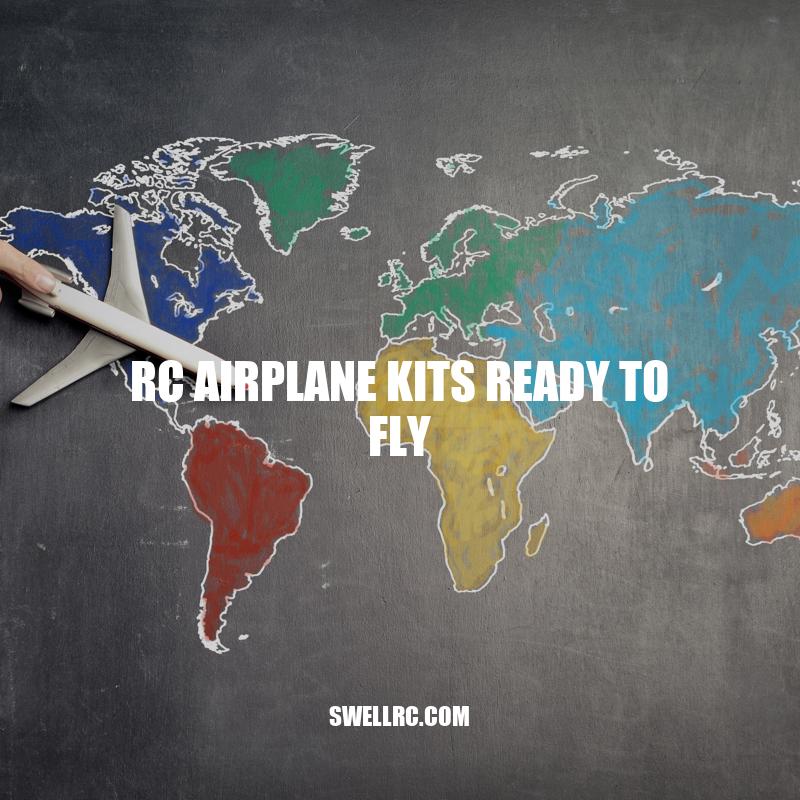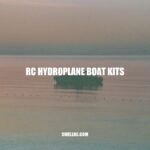Your Guide to RC Airplane Kits – Choosing the Best Ready-to-Fly Option
RC airplanes are miniature models of real aircraft that hobbyists build and fly for recreational purposes. RC airplanes come in two types, namely “Ready to Fly” (RTF) kits and kits that hobbyists need to build with individual components. An RTF kit comes with an airplane that is already assembled and ready to fly straight out of the box. The idea of getting an airplane that is already built might sound like cheating, but rest assured that there’s still a lot of fun to be had with these kits. Most RC airplane kits require skillful assembly to get the pieces in place, and sometimes small oversights can lead to significant problems such as the plane crashing on your first flight, which can be discouraging for those who are just starting out. RC airplanes also require the user to have a lot of skill and patience to fly because these devices are not easy to control, and it can be challenging for beginners to get the hang of things. RTF kits are an excellent option for beginners or anyone who would like to start flying RC airplanes with minimal fuss.
Benefits of Purchasing an RC Airplane Kit Ready to Fly
For those who want to try out the thrilling experience of RC airplanes, here are some advantages to purchasing an RTF kit:
- Cost-effective: RTF kits are generally more cost-effective because they are purchased as a complete set rather than purchasing individual components.
- Convenient: RTF kits are very convenient to use because you do not have to spend time building, tinkering with, or resurfacing individual planes.
- Saves time: Since these airplane kits already come assembled, there’s no need to worry about making rookie mistakes during assembly and wasting valuable time rebuilding the aircraft.
- Better for beginners: RTF kits are an excellent starting point for those who are just starting with RC aircraft because it eliminates the need for complex assembly, allowing beginners to dive right into the process of learning how to fly their planes.
There are various types of RTF kits available in the market, with each having unique features and capabilities. Horizon Hobby, HobbyZone, Amazon, and Walmart have various options of RC airplanes, including RTF kits to suit the requirements of enthusiasts. Most of these websites also provide detailed specifications and reviews from other buyers. In the next section, we will discuss the features that one should consider while choosing an RTF kit.
How to build your own RC plane?
Building your own RC plane can be a fun and rewarding experience. Here are the steps you can follow:
Step 1: Determine the purpose of your aircraft. This will determine the size, shape, and weight of your plane.
Step 2: Pick your electronics, such as the motor, battery, and radio control system. Make sure they are compatible with each other and suitable for your plane.
Step 3: Estimate the total weight of your aircraft, including electronics, and calculate the wing area needed to generate enough lift.
Step 4: Find the wing cube loading, which determines the wing loading for your plane based on weight and wing area.
Step 5: Decide on a wingspan based on the purpose of your aircraft and the wing area needed.
Step 6: Design the fuselage and tail section, taking into consideration the weight and balance of your plane.
Step 7: Decide how you will transport your plane, whether it be fully assembled or in separate pieces.
There are many resources available online to help with these steps, such as RCGroups.com, Flite Test, and RC Universe. Additionally, there are kits and plans available for purchase from websites like HobbyKing or the AMA (Academy of Model Aeronautics).
When choosing an RTF kit, here are some factors to consider:
- Type of RC airplane: There are different types of RC airplanes, including gliders, trainers, sport planes, and more. Choose an RTF kit based on what type of airplane fits your needs.
- Terrain: Depending on the terrain you plan to use your RC airplane over, you may need to consider factors such as wing size, power output, and the type of motor.
- Controller: It is essential to check the type of controller provided in your kit before purchasing. No matter how great the plane may be, if the controller is not user-friendly, it may ruin your experience.
For instance, if you are planning to fly in windy weather conditions, you might want to consider a plane designed with a larger wing span that helps in remaining stable in the air. Another popular choice is selecting a Gyro stabilization system, which helps in stabilizing the airplane on its horizontal and vertical axis.
Below is a detailed table on some of the popular RTF kit options in the market and their unique features:
| RTF Kit | Type of Airplane | Terrain | Controller |
|---|---|---|---|
| Sport Cub S | Sport Plane | Smooth Terrain | Handheld or Transmitter |
| Apprentice S 15e | Trainer Plane | Grass or Gravel Terrain | Handheld or Transmitter |
| UMX Timber Basic | Sport Plane | Versatile | Handheld |
Websites like Horizon Hobby, HobbyZone, Amazon, and Walmart offer a wide range of RTF kits to choose from. It’s essential to understand the unique features and capabilities of each kit before purchasing to ensure that you select the best one for your needs.
How do I choose the right motor for my RC plane?
When it comes to choosing the right motor for your RC plane, you should take into account the kv and size of the motor. A higher kv number and a smaller propeller will result in a higher speed of thrust for faster flight. For beginners, a motor kv between 850kv and 1500kv is recommended. Don’t forget to consider the size of the motor when making your selection. You can find more information on recommended motors on RC hobby websites such as Hobbyking or Horizon Hobby.
Tips for Assembling and Flying an RC Airplane Kit Ready to Fly
Assembling and flying an RC airplane can be a fun and engaging experience for aviation enthusiasts. Below are some tips to help you get started:
- Follow Instructions: Always read through the instructions provided with your RTF kit before starting assembly. Ignoring this step could lead to mistakes and might affect the proper functioning of the aircraft.
- Flying Location: Choose a flying location away from obstacles, buildings, and power lines. You don’t want to risk a collision with any of these during your flight.
- Wind Conditions: Check the wind conditions before starting your flight. Strong winds can make flying challenging and ruin the experience of flying your RC airplane.
- Familiarize with the controller: It would help if you took the time to familiarize yourself with the included controller of your RTF kit. Understand how each stick and knob of the controller affects the plane and its movements.
- Pre-flight Checklist: Before flying your plane, ensure that the battery is charged, the control surfaces move appropriately, and the trimming is correct. Going through a pre-flight checklist can ensure that everything is working optimally before the flight.
It is essential to note that flying an RC airplane requires some practice and patience. Don’t expect to become an expert in one flight. Take things slow and steady and gradually increase the flight duration as you become more comfortable with the controls.
Websites such as RCGroups, RCUniverse, and FlyingGiants provide community support for aviation enthusiasts. There you can find forums, resources, and ideas to help inspire and guide you in your RC airplane journey.
How do you fly an RC plane for the first time?
Flying an RC plane for the first time can be exciting and challenging, but with the right approach, it can be a breeze. Firstly, familiarize yourself with the user manual to understand the controls, transmitter, and receiver. Choose a large, open space devoid of obstacles and people to practice. Start by taxiing the plane until you’re comfortable before taking off. Maintain a low altitude and distance until you’re confident with the controls. Consider using simulators or joining a local RC club for guidance and support. Be patient, persevere, and practice regularly to master flying an RC plane. For additional tips and tricks, check out websites such as RCGroups.com or products such as the RealFlight RC Flight Simulator.
Conclusion
In conclusion, purchasing an RC airplane kit ready to fly is a cost-effective and time-saving approach to enjoying this exciting hobby. By following the instructions and tips mentioned in this article, aviation enthusiasts can quickly get started with assembling and flying their RTF kits. It is essential to maintain safety measures when flying your RC airplane, such as wearing safety glasses, choosing an optimal location, and ensuring that the plane is in good working order before each flight. As a community, aviation enthusiasts have access to rich resources and support provided by websites like RCGroups, RCUniverse, and FlyingGiants. The joy of flying an RC airplane can be a fulfilling experience, and getting an RTF kit is one of the best ways to start.



